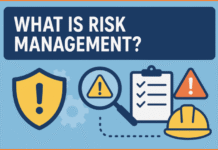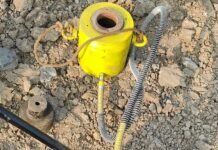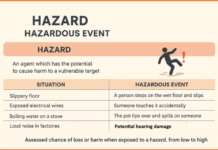In industries where flammable gases, vapors, dust, or fibers are present, proper classification of hazardous locations is critical to ensure safety and compliance. The National Fire Protection Association (NFPA) 497 provides comprehensive guidelines for the classification of areas where flammable or combustible materials may be present in the air in sufficient quantities to produce explosive or ignitable mixtures.
Hazardous Location Classification system as per NFPA 497.
Contents
Class I – Flammable Gases, Vapors, or Liquids
Class I locations are areas where flammable gases, vapors, or liquids may be present in the air in quantities sufficient to produce explosive or ignitable mixtures.
Divisions:
- Division 1 (Zone 0/Zone 1):
- Ignitable concentrations exist under normal operating conditions.
- Frequent presence due to maintenance, leakage, or repair.
- Zone 0: Constant presence.
- Zone 1: Likely presence during normal operation.
- Division 2 (Zone 2):
- Ignitable concentrations are not normally present but may occur under abnormal conditions.
- Typically due to accidental rupture, leaks, or system failure.
Class II – Combustible Dusts
Class II areas contain combustible dust that can present fire or explosion hazards when dispersed in the air.
Divisions:
- Division 1 (Zone 20/Zone 21):
- Dust is present under normal conditions or during frequent cleaning or maintenance.
- Zone 20: Continuous presence.
- Zone 21: Likely presence during normal operation.
- Division 2 (Zone 22):
- Dust accumulation occurs only under abnormal conditions.
Class III – Ignitable Fibers or Flyings
These areas deal with easily ignitable fibers or materials, such as textiles or wood shavings, that don’t necessarily suspend in air but can still catch fire.
Divisions:
- Division 1: Fibers are handled or manufactured.
- Division 2: Fibers are stored or used occasionally.
Why Classification Matters
- Prevents ignition sources from triggering explosions.
- Determines the type of equipment and enclosures suitable for installation.
- Guides design, inspection, and maintenance in compliance with safety codes.
NFPA 497 serves as a cornerstone for defining and managing hazardous locations in industries like oil & gas, chemical manufacturing, pharmaceuticals, and grain processing. Proper classification is not just regulatory—it is essential for protecting lives, property, and the environment.
#NFPA497 #HazardousLocations #IndustrialSafety #ExplosionPrevention #Class1Division1 #Zone0 #CombustibleDust #WorkplaceSafety #ProcessSafety #HazardousAreaClassification





